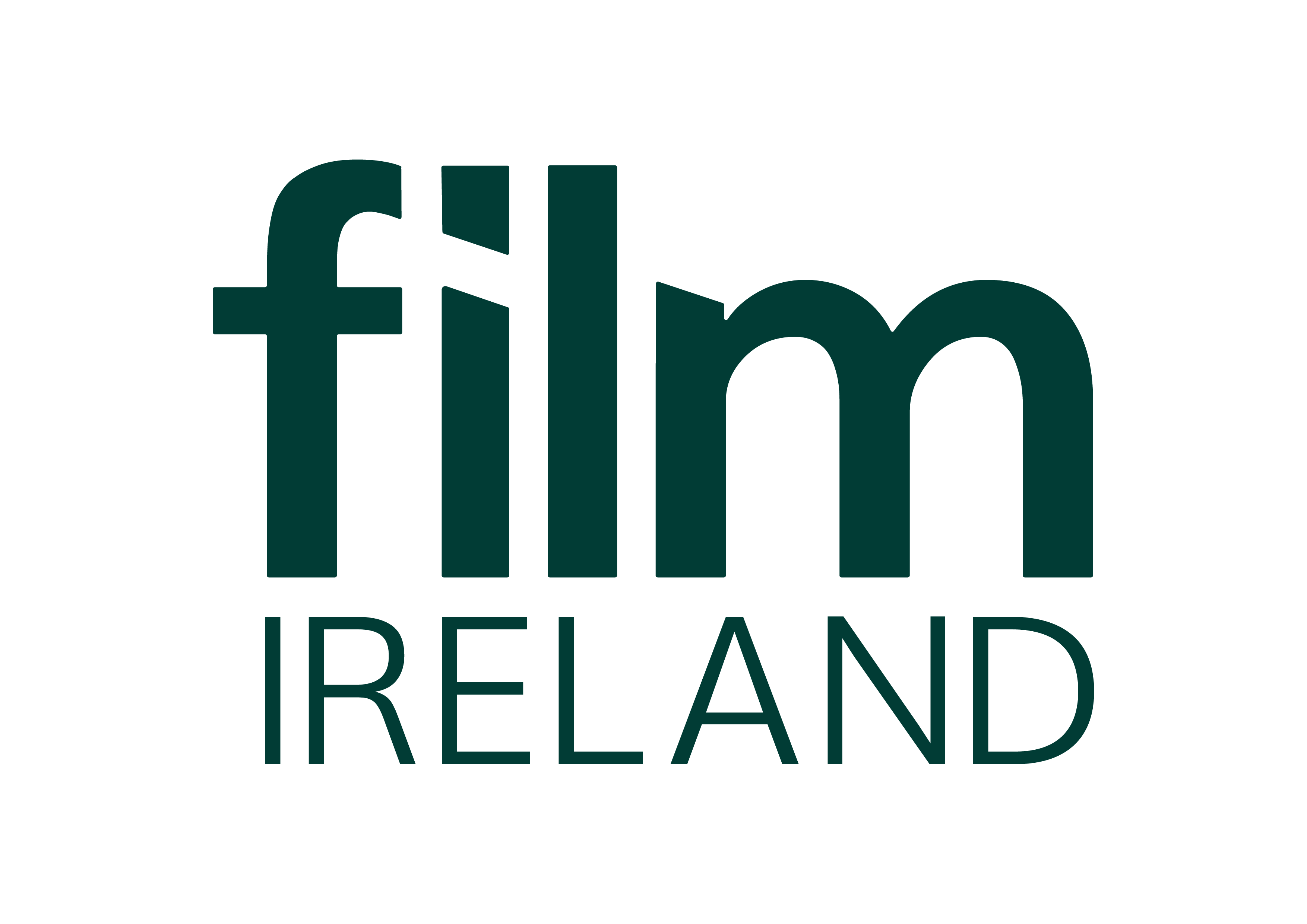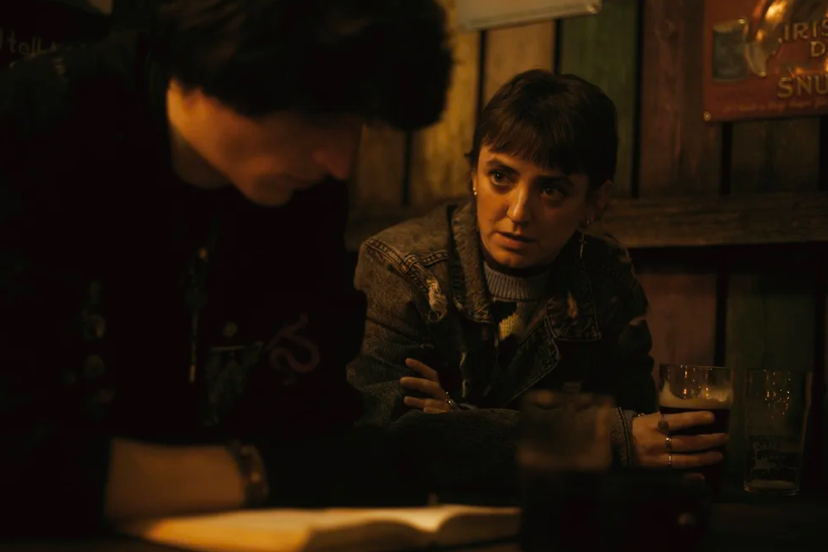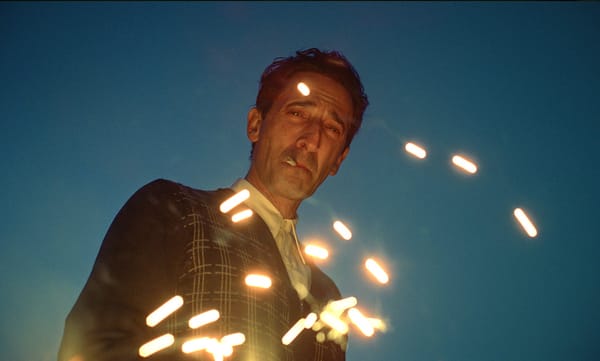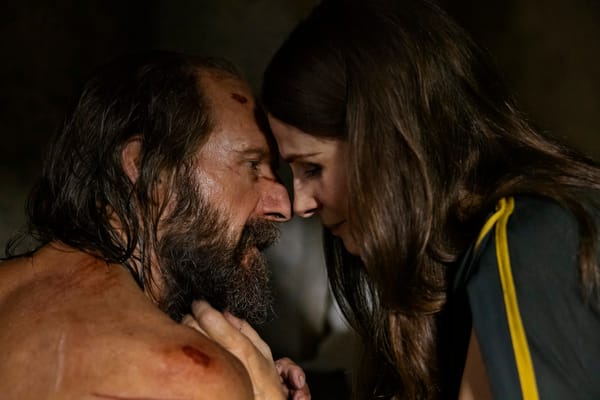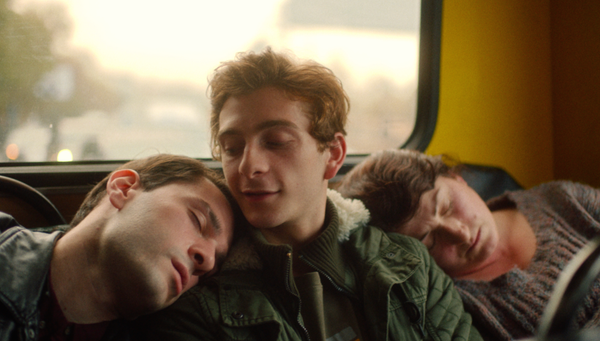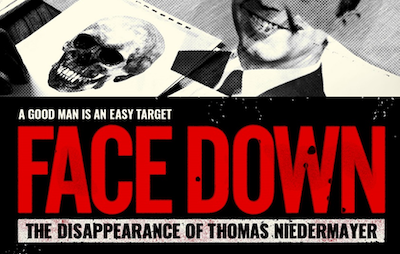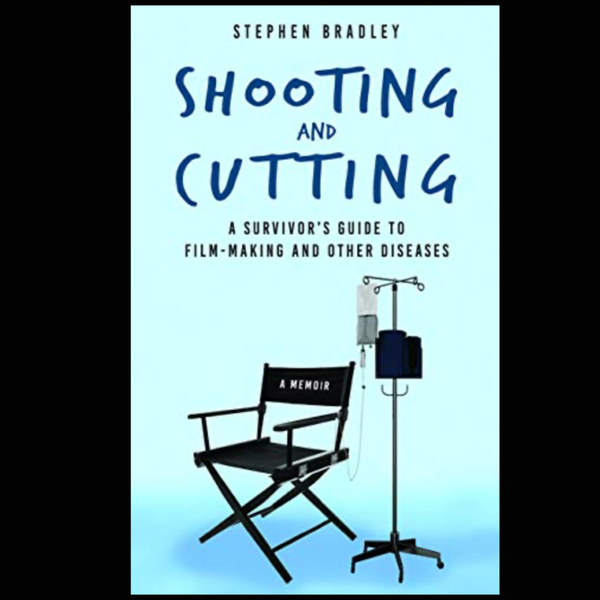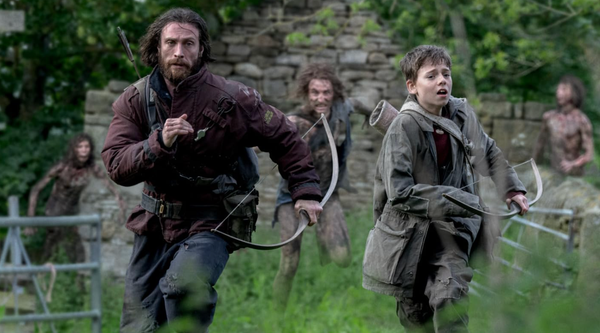The great Russian director Andrei Tarkovsky once said: “A book read by a thousand different people, is a thousand different books”. This hypothesis can be applied to Gabriel’s Trumpet, written and directed by Thomas Bennett and produced by Niall McCloskey.
Mirrored in mystery and shrouded effigies, Gabriel’s Trumpet is a tangled web of MacGuffins, red herrings and paths to apparently nowhere, laying a trail that is destined to be dispelled into the foggy dew. Protagonist Robin (Mercer MacWilliams Hughes) sets out in resigned weariness as he trudges across the dystopian landscape of Belfast city in search of his missing friend Peter (Daniel Gray). However, his quest provokes more questions than answers as he is watched by persons unknown and his actions are brought into the sharpest scrutiny.
Assistant Editor June Butler sat down with Thomas Bennett, as the short is about to premiere at Belfast Film Festival.
What was the concept behind Gabriel’s Trumpet? How did the story come to be?
Gabriel’s Trumpet grew out of a blurred mesh of people, long walks, various anxieties and other wormholes. Unlike work both prior and since, this piece came in small rushes of thought which then took shape during the shoot and reformed again in the edit. A series of synergistic moments kicked off the process over 2023 to 2024, one of the first of which happened whilst working in Glenarm on the north coast, heading back to Belfast in the passenger seat of a Luton Van.
Just past the exit of the town heading southward, the road passes a long hard shoulder, beyond which the sea stretches out towards Scotland. The sky, sea and road, a grey wall. Sandwiched between two silent, sweaty co-workers and watching the dull scene, the overwhelming image of a solitary hitchhiker popped into existence. Dehydrated? Post work delirium? For the next two months or so, each time we passed that spot, the same figure flittered back, black clothing and a single hand raised in hopes of a lift. Small moments like this lit the fuse for the rest to follow.
The main location was Belfast city. What was the thinking behind this? Was it accessibility or another reason?
Firstly, Belfast is an excellent playground and one in which all the creative talent of this project live. Compact, bustling with character, historically rich and unique. Having worked closely with the producer of this project Niall McCloskey here and on our previous short, In Wake of John Doyle (2024), we have a joint mission to avoid the stereotypes, frustrations and clichés of this place. Adding a new side to the face of Belfast is always on our minds and Gabriel was no different.
As a codicil to the last question, some of the external areas focused on during quieter moments were not lived in spaces as in rows of houses portraying cosy domesticity. Instead, they were decaying, tumbling down, places that had once been magnificent yet now lay almost in ruins. Was this a deliberate trope to convey nihilism and emptiness?
The gaps, liminal spaces and general urban decay of Belfast remain unavoidable from suburbia to city centre. Whilst this, and probably for the best, is changing at a fierce pace, it is hard not to be intrigued by it. A collection of bruised windows into the skeleton of the city, and yes, it favours our somewhat apocalyptic story but it is also used to contrast with where the world is currently, a constantly swinging mood between nihilism and complacency. Robin’s world is one of loss, surrounded by an uncertainty we share with him. The clash of ultra modern with faded or often torn down buildings reinforces this uncertainty that modern life is often riddled with. The end may be round the corner, but we are still going to work.
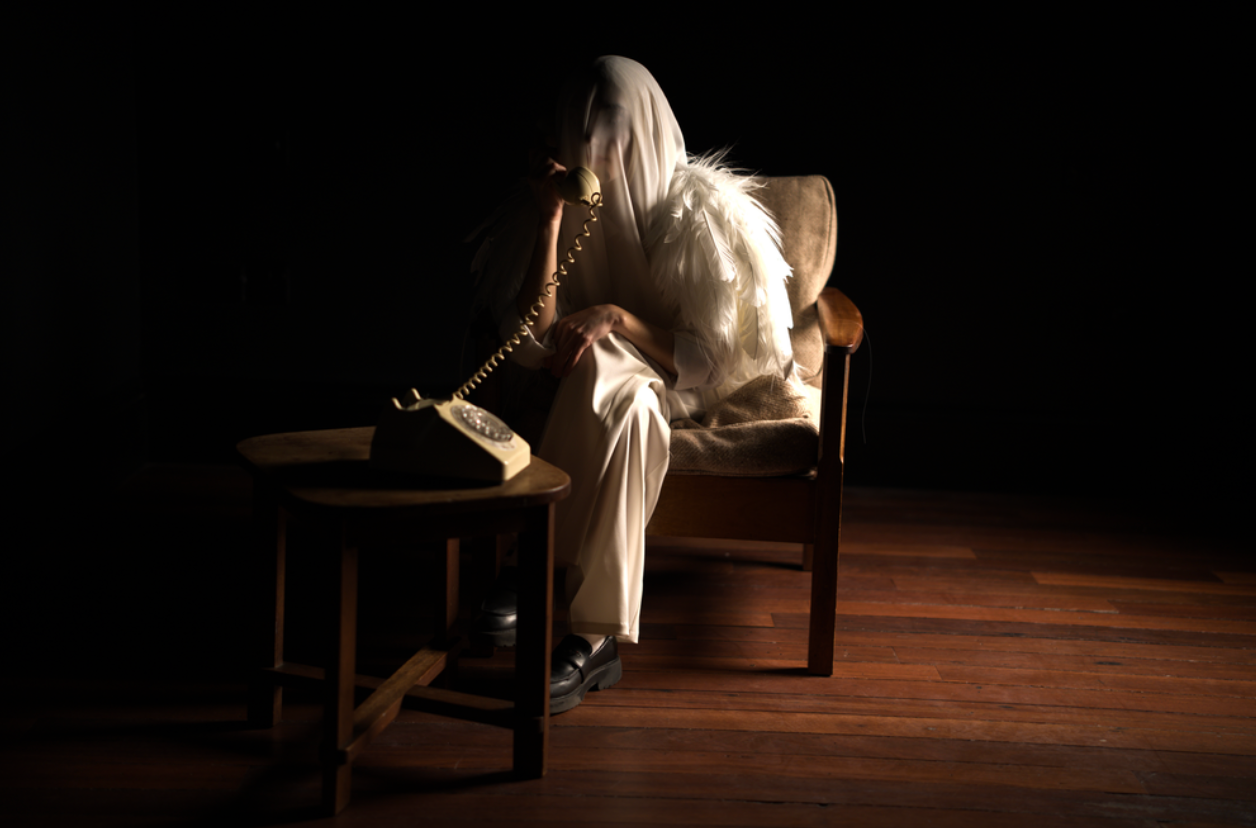
Many scenes are shot on deserted streets, in hazy darkness with single figures walking along lamplit paths. Was this desolation a euphemism for the loneliness of rigorous conviction when Robin is the only one who believes that Peter is still alive?
Without giving too much away, I found the eyes of the camera and its very particular perspective to favour these locations and frames. We as an audience have a secondary role in how this story plays out, the choice of what is seen and where the camera points is up to someone else.
In some open spaces, time seems to stand still. This was in direct contrast to the frenetic and frantic search by Robin for Peter within closed in areas, overgrown with gnarled trees and bushes. Could the open expanses symbolise anhedonia and disinterest? And following on from that, could comparisons be made to Robin’s desperate search within claustrophobic confines and overgrown enclosed areas, representative of his chaotic jumbling thoughts?
In a similar answer to your last question, the motivations of the camera, what we focus on, what we avoid, who we look at, the speed or stillness of the shot and where the character is, are factors dictated by a specific watcher. The general world of psycho geography in relation to filmmaking that you touch on here though, is an avenue I enjoy immensely and one of utmost importance, so I am glad you picked up on it. The physical world of Gabriel’s Trumpet is at the forefront of the narrative, a world that offers itself up for dissection.
There appears to be great focus on a demise as inevitable and unavoidable, yet Robin is determined to press on and find answers to Peter’s supposed passing, even going so far as to contact Peter’s family and friends, much to their great distress. I see a link between Elisabeth Kübler Ross and her developed theory on the five stages of grief. Denial, Anger, Bargaining, Depression and Acceptance. Sometimes one stage oversteps another or is omitted altogether. Do you think this theory could be applied to Robin and his critical thinking processes?
I think it is possible. But grief and loss, like most things, fall in and out of theorised patterns. Robin is no exception to the rule and he certainly goes through the emotions you have mentioned there, however Peter’s disappearance is slightly different as it is just that, a disappearance. There is no finality, no answer there. This, combined with the classic process of grief, plots an even greater path of chaos for Robin. Loops of making progress, doubling back, accepting then unaccepting again. Even in the final moments we are with Robin and he potentially has an answer of sorts, the seeds of doubt are so firmly rooted that what he finds likely offers little closure.
There is an implied forced acceptance of death in that an ominous presence watches from afar both overtly and covertly, appearing to track Robin and his activities. From my perspective, I feel this person is determined to wrest control of Peter’s narrative and make it his own or ostensibly force Robin into admitting that Peter is no longer alive. I see this person as a maven in the art of relentless seeking, a harbinger, possibly a grim reaper of sorts. Do you think this is a fair assessment?
I think that is a fair assessment. As previously nodded to, the camera is far from abstract in this work. It makes itself known. As to who or what it actually is, I am going to encourage people to figure out for themselves.
In the Bible, on the day of judgement, Gabriel blew his trumpet to announce a final reckoning. The narrative of Gabriel’s Trumpet suggests that the day of accountability is being studiously ignored by Robin, and if his friend is still alive, also by Peter. Is the tracking by the harbinger also an allegory for man’s refusal to face his own fallibilities?
The world is constantly ending. By the time we have a clear cut answer, I am sure it will be far too late to respond to it and even then, many would deny it. We as a species have a hard time acknowledging the blatant fact of death at any point in our lives. Robin’s tale pivots on this.
At a number of points in the film, there are images of a man standing silently with a hole in the area where his heart would be. Can this be interpreted as a relentless quest by someone who is not to be deterred from their actions? Someone heartless and robotic?
Again it is a lovely assessment, but I would not want to direct an audience response with my initial reasons for the imagery at play. What I will say is that there are a lot of circles involved in the work, from the trumpet’s bell to the standing stone, to painted eyes and alternative lenses. Loops and circles are intrinsic to the piece.
Opening scenes of the film show a large monolith with a hole channelled directly through it from side to side. Smaller versions of these stones are called Hag Stones and are considered to have magical qualities. Would it be fair to consider this large stone as a metaphor for the distempered fantastical drama to come?
I think making any narrative story on the island of Ireland, you are leaning into its history and with that the magical qualities embedded in the landscape and people. Now of course, just how explicitly these magical qualities appear in the work covers a wide spectrum but scratch below the surface of any city, landscape, story, family history and almost immediately you are digging into the mythological or fantastical. Gabriel’s Trumpet is clearly no stranger to this, however all metaphors that might be at play only come into conversation when an audience starts devising their own meanings from it. To the characters, everything they see, are shown or find out, for them exists.
As a fan of David Lynch, I see some strong correlation between Lynch’s style of directing, shuddering frames, rapidly shifting and seeming to overlay one on top of the other. Twin Peaks (1990), Lost Highway (1997). Who are your influences in this regard? Do you have a director whose methods and mise en scène resonate with you?
It is a tricky one when dissecting your own influences as they become such a part of how you see the world that the influences become obscured within the thing you are making. I largely try to look outside of film for influence. My friends, books, music, buildings, people, experiences as a whole are far more valuable in general than other films. I also find it dangerous to stray too close to other filmmakers. It is very easy to convince yourself that there is a certain right way to make your work. Along with the rest of the world, I love David Lynch and he is never too far from my mind. He is as lovable for his creations and personality as what he represents. I would say if one other director was on my mind whilst writing the script it would be Italian master Michelangelo Antonioni. It is not hard to see why.
The sudden fast motion of images in the barren docks of Harland and Wolff run in parallel with other, more sedate moments throughout the film. Is this an allegory for the temporality of existence? Can time and movement become fast or slow depending on the lived experience?
I would point to the perspective of the camera to answer that. It is another clue as to the watcher and their understanding or interactions with the world. As we are all well aware, time is completely at mercy to the lived experience. What we are seeing in Gabriel’s Trumpet is time from one specific angle, one perspective.
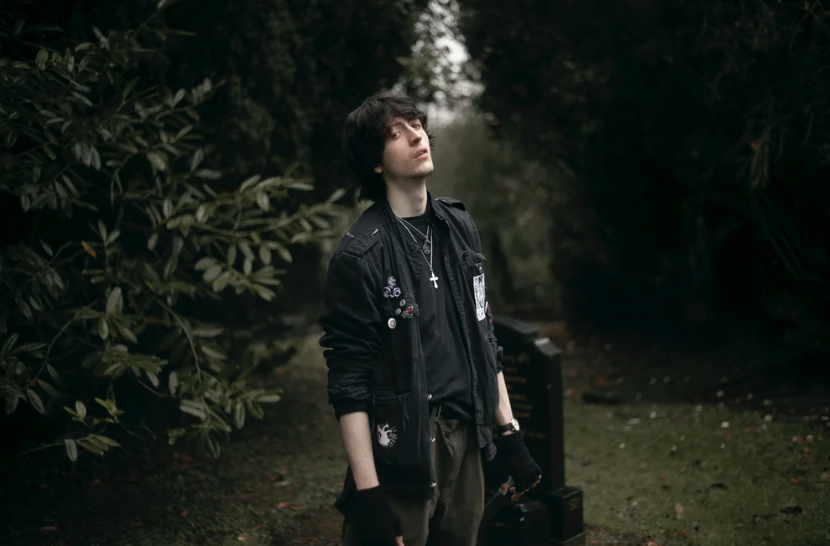
Michael Haneke directed the film Hidden (Caché in French) in 2005, telling the story of a middle class family who are sent menacing tapes and letters by a perpetrator who remains unknown to them. Likewise in Gabriel’s Trumpet, the action is witnessed by someone anonymous at the same time as audiences experience the action. What the watcher sees, audiences simultaneously observe. It is almost as if the audience are the characters in this sense. Do you think such a mechanism brings more tension to the plot as it unfolds?
I am a great fan of that film and caught it in Belfast’s no. 1 arthouse cinema, QFT, a few years ago. Interestingly, a question similar to this was asked in a Q&A after the film which resulted in a heated argument between two members of the audience. I am always fascinated by the relationship between viewer, medium and story. Undeniably, the emphasis on the watcher or the existence of the camera in the work alters the reaction from the audience. If this results in tension, fantastic, however really I hope it results in a greater level of immersion and inclusion into the work from whichever angle. Caché does this expertly as Haneke often does, questioning the complicity of the audience in the often violent acts on show. For Gabriel’s Trumpet, I hope it deepens the level of storytelling, de-passifying the viewer as merely a bystander to the work. I hope it encourages people to dig deeper.
The usage of audio tapes as a means to narrate and inform by various characters in the film brings immediacy to the story. It is reminiscent of the movies of Chantal Akerman, where voices, footsteps, sounds of walking, cars and buses passing by are all unmovable yet necessary parts of the colourful imagery. Were these sounds injected into the story to entice the viewer into considering the why and what of the tale?
Chantal Akerman is one of my holy grail filmmakers, a huge influence on both mine and Niall’s creative output of recent so I greatly appreciate the comparison. The rich sounds of the city and the fantastic work by our post sound mixer Jim McMorrow was something we knew would be essential to Gabriel’s Trumpet from the get go. With the speed of the narrative, editing and volume of questions laid out within the first few minutes of the work, crowding the viewer with music felt unnecessary. Instead, Samuel Morgan used his rich, analogue score to heighten certain moods and scenes in only very particular moments, predominantly in the later half of the work. There are, as you have picked up on, slight clues in the soundscape and in particular nods to specific elements of our story, however the most clear goal was to enrich the landscape of Robin’s world. Bring the visual storytelling to life.
Finally, a personal comment on the soundtrack. Music in any film can play a crucial role in how it is viewed from an emotional standpoint. The usage of Visions of Hell by Herostratus was an apt outro to Gabriel’s Trumpet.
I really appreciate it. Thank you for your insights and questions, it has been a pleasure to answer them.
Thomas, I would like to extend my thanks to you for sharing your thoughtful and provocative film!
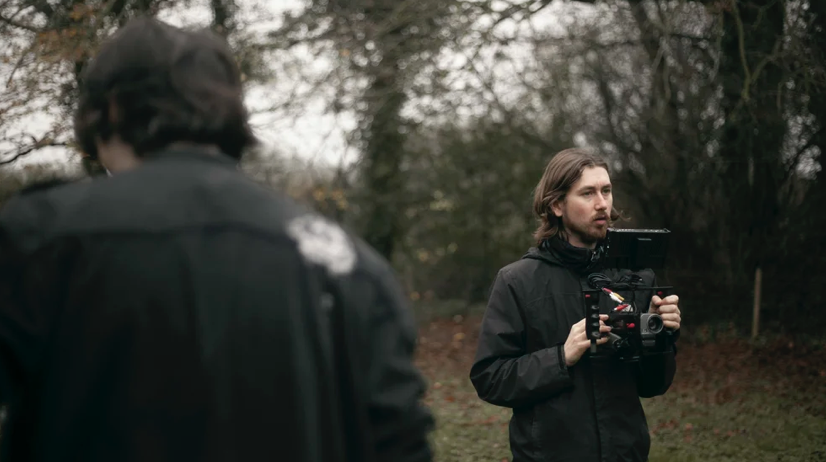
About Thomas Bennett
A multidisciplinary British–Irish artist working primarily with Hi-8 and Super 8 formats, Thomas Bennett made his directorial debut at the 2021 Raindance Film Festival with The Seven Signs. In 2024, he co-wrote, co-directed and produced In Wake of John Doyle with long-term collaborator Niall McCloskey. The short enjoyed a strong festival run, screening at Dublin International Film Festival (DIFF) 2025, Belfast Film Festival 2024 and Off-Screen Film Festival 2025, and was long-listed for the British Short Film Awards 2024. His most recent micro-short, Now That I Look (2024), premiered at Cinemagic in April 2025 at QFT Belfast, continuing his exploration of the overlooked voids, gaps and architectural absences that shape his home city.
Gabriel’s Trumpet will screen in Competition Shorts 1 at the Queen’s Film Theatre (QFT) on Saturday 1st November at 10.00am for the Belfast Film Festival.
